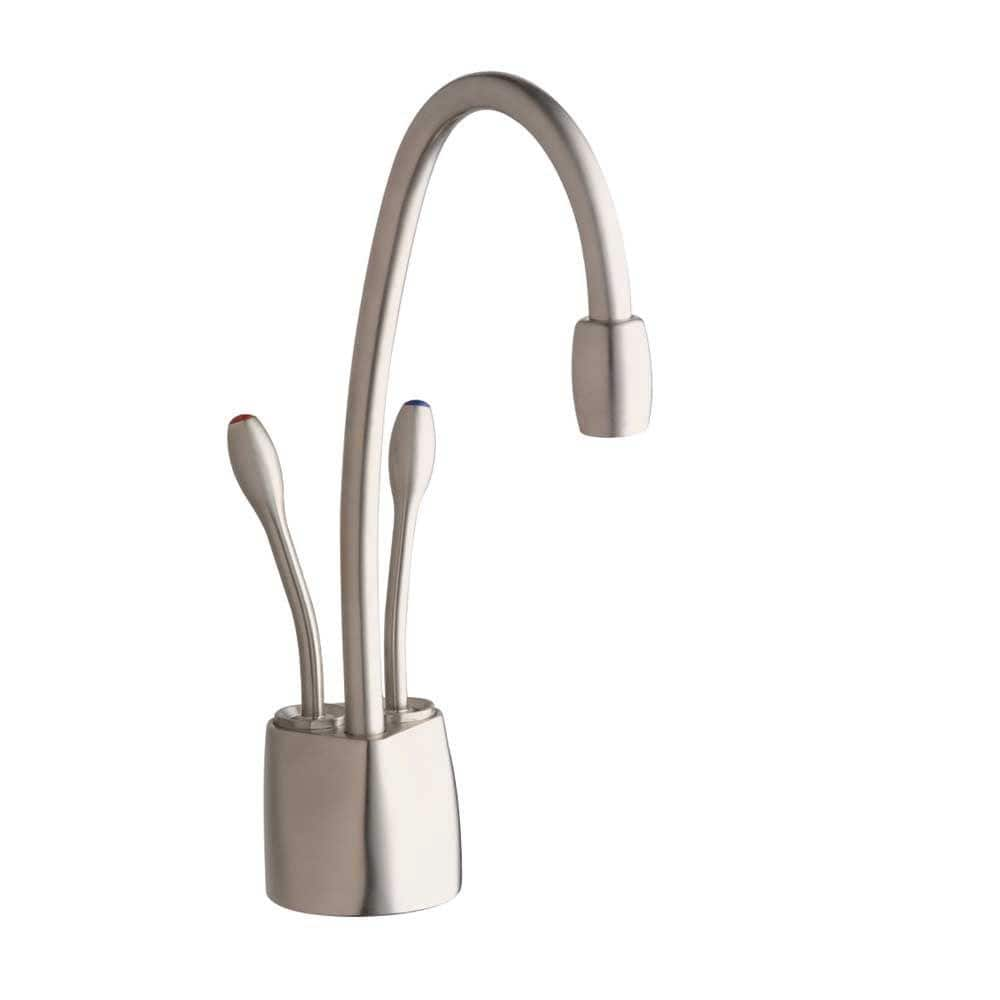InSinkErator Indulge Contemporary Series 2-Handle 8.4 in. Faucet for Instant Hot & Cold Water Dispenser in Satin Nickel
Durable all Brass Deck Mount 2-Handle Satin Nickel Swivel Faucet. Fits Standard 1.25″ – 1.5″ Kitchen Sink Faucet Hole. Backed by our 5-Year “We Come to You” Limited In-Home Warranty.
The InSinkErator Indulge 2-Handle Hot/Cool Water Dispenser Faucet in Satin Nickel has a graceful, high-arching spout that swivels to make it easy to fill pitchers and pots. An auto shut-off hot lever prevents waste. This faucet is designed for use with the InSinkErator stainless-steel tank and F-201 filtration system (not included). It has a sleek, contemporary design in brass with a satin nickel finish.
- Compatible with InSinkErator HWT-F1000S Series Hot Water Dispenser Tank & Filtration System (sold separately)
- Graceful, high-arch swivel spout makes filling pots & pitchers quick and easy
- Durable brass faucet dispenses near-boiling water up to 200°F
- Hot lever automatically shuts off, while the stay-on cool lever remains on for easy use
- Backed by InSinkErator’s 5-Year “We Come to You” Limited Service Warranty Covers Repair or Replacement by an Authorized Dealer
Additional information
| Connection size (in.) | 3/8 In. |
|---|---|
| Faucet Height (in.) | 8.38 |
| Spout Height (in.) | 8.38 |
| Certifications and Listings | No Certifications or Listings |
| Manufacturer Warranty | 5 year parts and in home service |






by Ralph
The unit matched the original and was fairly priced.
by Nail
Installation was simple and easy.
by Win
This is my 3rd FHC1100 in 11 years. The 1st one was replaced under warranty and this is the 3rd set. Even though it does not last longer than I like, it does look stylish & very convenient. If you do not mind replacing it in every 4 years, it performs well as long as it lasts.
by Knuckel
Directions were easy to read and understand. Color coded hoses ans couplings of different sizes made the job a no brainer snap.